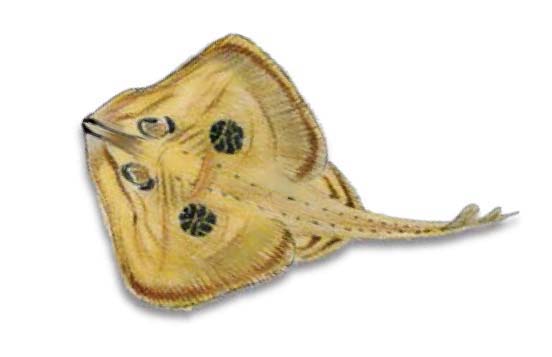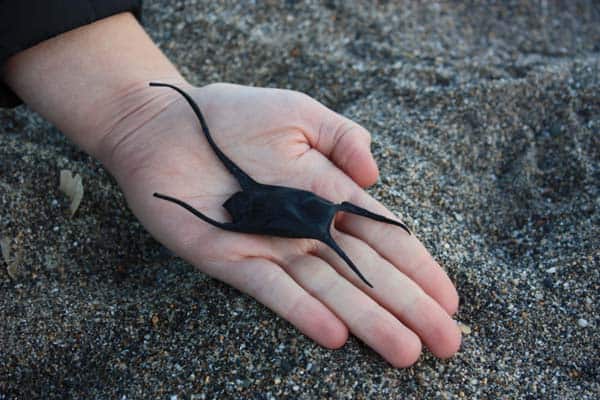
Cuckoo Ray, Leucoraja naevus. Artwork: Sinead Begley
Fast Facts
Scientific Name: Leucoraja naevus
Gaelic Name: Roc na sul dabh
Range: The Cuckoo Ray is relatively common in Irish and UK waters,
although it is scarce in the North Sea.
Habitat: It is found over most types of ground in depths of 30m to over 150m.
Lifespan: Unknown
Reproduction: Adults start reproducing at about 4 years of age and females lay about 90 eggs throughout the year.
Diet: Small crustaceans, worms and small fish, such as sandeels.
Predators: Seals, humans.
Conservation status: Listed as Least Concern by the IUCN.
Cuckoo Ray eggcases are rarely reported by citizen scientists on Irish beaches, most likely due to the fact that females lay their eggs offshore.

This eggcase is very small with no keels. It can also be recognized by its extremely long horns, although these are fragile and may be broken.
If you find one of these eggcases on the beach, please do report it to your local shark and ray sightings scheme.